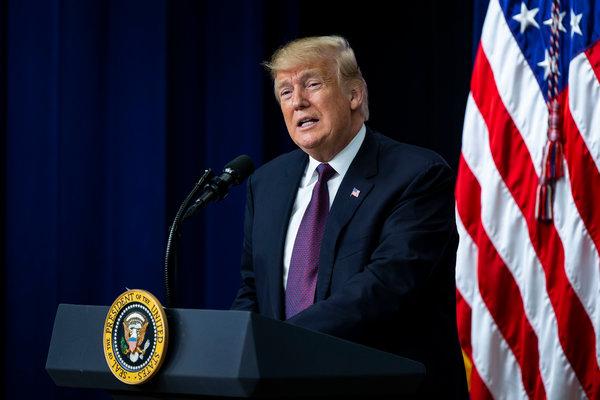The Kashmir Issue: Understanding The Roots Of India-Pakistan Tensions

Table of Contents
Historical Context: The Partition of India and the Genesis of the Dispute
The partition of British India in 1947, a hastily executed division of the subcontinent into India and Pakistan, laid the groundwork for the Kashmir conflict. The partition plan failed to adequately address the future of princely states, independent territories ruled by local maharajas. Jammu and Kashmir, a strategically important region with a Muslim majority but a Hindu maharaja, Hari Singh, found itself at the heart of this power vacuum. This created an immediate challenge, setting the stage for the ensuing conflict.
Pakistan, fueled by the desire to create a contiguous Muslim state, pressured Maharaja Hari Singh to accede to Pakistan. However, Hari Singh, initially hesitant, eventually signed the Instrument of Accession with India in October 1947, following a Pakistani-backed tribal invasion of Kashmir. This accession, while securing Indian military intervention to repel the invasion, is fiercely contested by Pakistan to this day, forming the core of the Kashmir dispute.
The First Kashmir War (1947-48) resulted in a ceasefire and the establishment of the Line of Control (LoC), a de facto border dividing Indian- and Pakistani-administered Kashmir. This war, and subsequent conflicts, including the Indo-Pakistani Wars of 1965 and 1971, solidified the territorial division but failed to resolve the underlying issue.
- Key players involved in the accession decision: Maharaja Hari Singh, Lord Mountbatten (last Viceroy of India), Jawaharlal Nehru (first Prime Minister of India), Muhammad Ali Jinnah (founder of Pakistan).
- The role of Maharaja Hari Singh: His initial indecisiveness and eventual accession to India remain a point of contention.
- The impact of the war on the civilian population: Widespread displacement, violence, and loss of life characterized the conflict's human cost.
- The international community's response: The UN Security Council intervened, calling for a plebiscite to determine the will of the Kashmiri people, a promise yet to be fulfilled.
The Role of Religion and Identity in the Kashmir Conflict
The Kashmir conflict is not solely a territorial dispute; it is deeply intertwined with religious and ethnic identities. While the population of Kashmir is predominantly Muslim, there are significant Hindu and Sikh minorities, leading to complex demographic dynamics. The region's identity is further complicated by the presence of distinct Kashmiri ethnic groups.
Religious nationalism has played a significant role in fueling the conflict, with both India and Pakistan using religious narratives to justify their claims. This polarization has hindered peace efforts and fueled extremism in the region. The interplay of religious and ethnic identities presents a formidable obstacle to finding a lasting resolution to the Kashmir dispute.
- The composition of the Kashmiri population: A majority Muslim population, with significant Hindu and Sikh minorities, contributes to the multifaceted nature of the conflict.
- The impact of religious polarization on peace efforts: Religious narratives used by both sides obstruct constructive dialogue and compromise.
- The role of religious leaders in the conflict: Religious leaders on both sides have influenced public opinion and sometimes exacerbated tensions.
The Geopolitical Dimensions of the Kashmir Issue
Kashmir's strategic location at the crossroads of India, Pakistan, and China adds another layer of complexity to the conflict. Its proximity to vital trade routes and its abundant water resources make it a geopolitical prize of significant value.
External actors have also played a role in influencing the conflict. During the Cold War, both superpowers supported their respective allies in the region, exacerbating tensions. In the post-Cold War era, while the dynamics have shifted, the involvement of external players remains a factor in the overall Kashmir dispute.
- The role of China in the Kashmir dispute: China's claim over Aksai Chin, a part of the Kashmir region, further complicates the territorial issue.
- The impact of US foreign policy: The US has historically attempted to mediate between India and Pakistan, but its influence has been limited.
- The influence of regional powers like Afghanistan: Regional instability can indirectly impact the Kashmir conflict, creating opportunities for militant groups.
The Ongoing Conflict and Attempts at Resolution
Despite numerous attempts at conflict resolution, including peace talks and mediation efforts under the auspices of the United Nations, a lasting solution remains elusive. The Shimla Agreement (1972) and the Lahore Declaration (1999) represent significant attempts to de-escalate tensions but failed to resolve the core issue.
The ongoing insurgency and terrorist activities in Kashmir have further complicated the peace process. These actions undermine trust between India and Pakistan and create an environment of fear and instability. Achieving a lasting peace requires addressing the root causes of the conflict, fostering dialogue, and addressing the concerns of the Kashmiri people.
- The Shimla Agreement (1972): Established the Line of Control (LoC) as the de facto border.
- The Lahore Declaration (1999): Aimed to address the Kashmir issue through dialogue but was short-lived.
- The role of the United Nations: The UN's involvement has been limited, with the promised plebiscite yet to be implemented.
- The challenges of achieving a lasting peace: Lack of trust, continued insurgency, and conflicting national narratives represent significant hurdles.
Conclusion: Understanding and Addressing the Kashmir Issue
The Kashmir conflict is a deeply rooted and multifaceted issue, shaped by historical events, religious and ethnic identities, and geopolitical considerations. Understanding the complexities of this enduring dispute is essential for fostering peace and stability in the region. The continued involvement of external actors, the impact of religious polarization, and the ongoing insurgency all pose significant challenges to conflict resolution.
The need for continued dialogue, genuine engagement with the concerns of the Kashmiri people, and a commitment to peaceful resolution remains paramount. We urge readers to further research the Kashmir issue, engage in informed discussions, and advocate for peaceful solutions. Only through understanding and sustained dialogue can we hope to find a lasting resolution to this long-standing Kashmir conflict and pave the way for lasting peace in the region.

Featured Posts
-
 Lahore School Timetable Changes Psl 2024 Considerations
May 08, 2025
Lahore School Timetable Changes Psl 2024 Considerations
May 08, 2025 -
 Dont Miss Out Psl 10 Tickets On Sale
May 08, 2025
Dont Miss Out Psl 10 Tickets On Sale
May 08, 2025 -
 Cusma Trump Declares It A Win Win While Maintaining Termination Threat
May 08, 2025
Cusma Trump Declares It A Win Win While Maintaining Termination Threat
May 08, 2025 -
 Aj Aym Aym Ealm Ky 12 Wyn Brsy Mnayy Jaye Gy
May 08, 2025
Aj Aym Aym Ealm Ky 12 Wyn Brsy Mnayy Jaye Gy
May 08, 2025 -
 Canada Post Workers Could Strike Again What You Need To Know
May 08, 2025
Canada Post Workers Could Strike Again What You Need To Know
May 08, 2025
